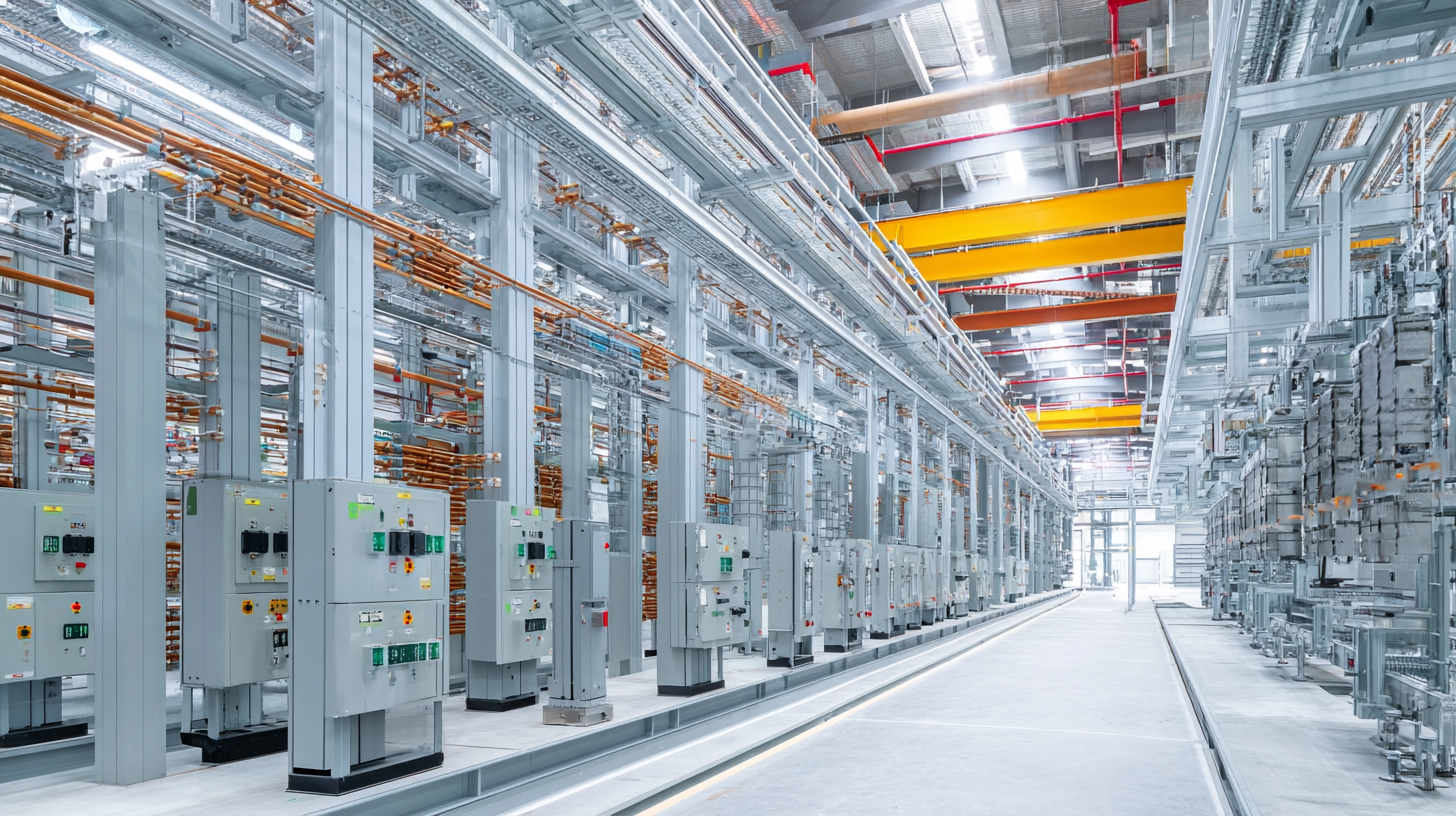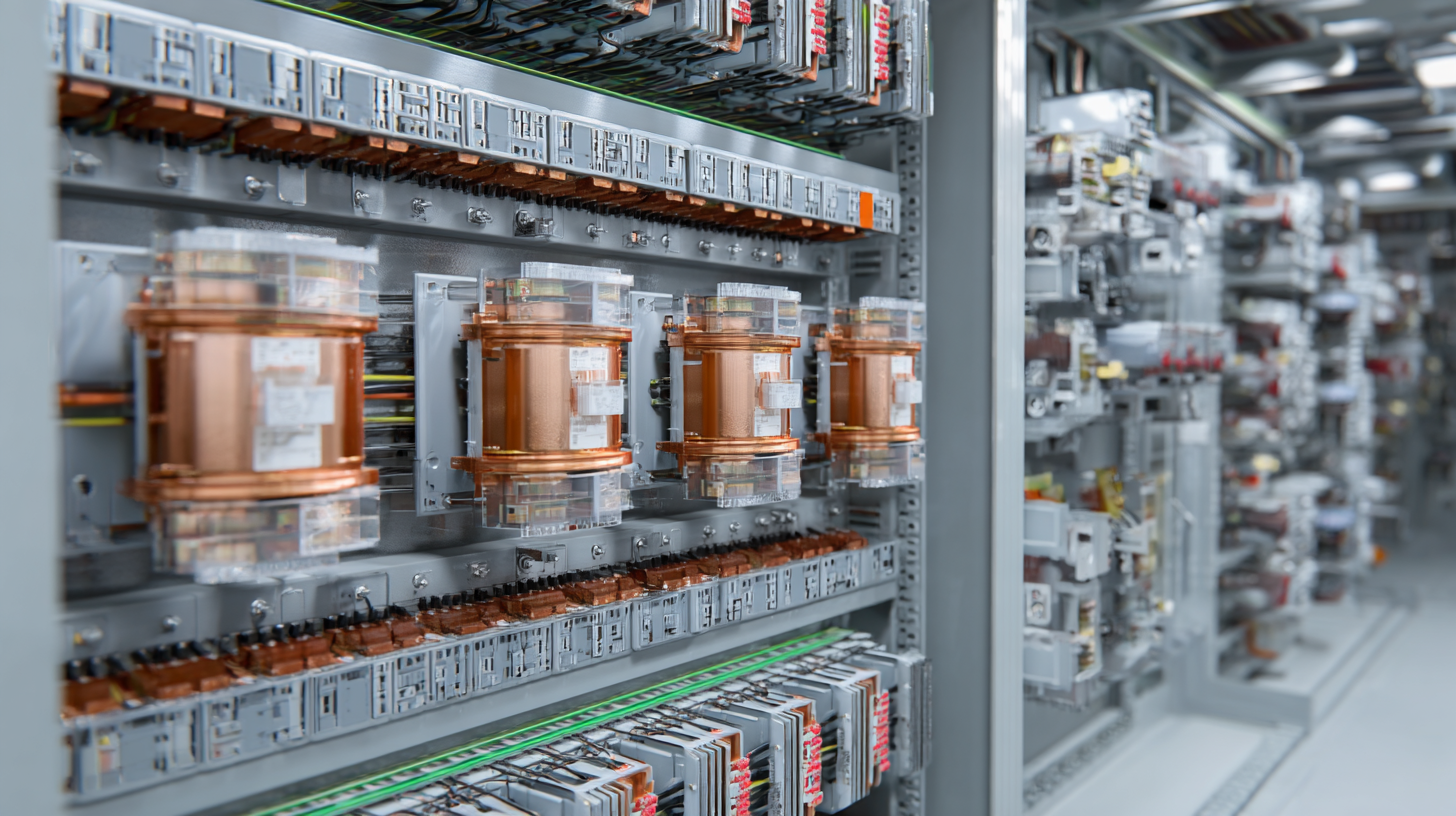Leave Your Message
-
Phone
-
E-mail
-
Whatsapp
-
Whatsapp


As we move toward 2025, the landscape of electrical distribution systems is set for significant transformation, primarily driven by advancements in Busduct Busbar technology. According to a recent report by Market Research Future, the global Busduct Busbar market is expected to grow at a compound annual growth rate (CAGR) of 7% during the forecast period, indicating a rising demand for efficient and flexible power distribution solutions.
This growth is propelled by a growing emphasis on sustainable energy practices and increasing infrastructure investments across various industries. Busduct Busbars are becoming increasingly vital in facilitating energy distribution in commercial buildings, transportation systems, and industrial facilities, offering advantages such as reduced installation time and improved safety.

As we gaze into the future, understanding the emerging trends and innovations surrounding Busduct Busbars will be essential for stakeholders looking to enhance their electrical systems and meet the demands of an evolving energy landscape.
The busbar trunking system market is poised for significant growth, with projections indicating a market size exceeding USD 2.9 billion by 2024 and an impressive compound annual growth rate (CAGR) of over 9.6% from 2025 to 2034. This surge is primarily driven by advancements in grid infrastructure and energy distribution technologies. Emerging innovations are redefining the landscape of busduct busbars, paving the way for improved efficiency, sustainability, and safety in electrical systems.

As we look ahead to 2025, several key technologies are at the forefront of these innovations. Smart busduct systems equipped with IoT capabilities are enhancing monitoring and maintenance, allowing real-time data analysis to optimize performance. Additionally, the integration of advanced materials and designs contributes not only to weight reduction but also to improved thermal management, essential for modern energy demands.
Tips: When considering a busduct system, prioritize vendors that offer modular designs for scalability and ease of installation. Focus on systems with strong thermal and electrical performance ratings to ensure reliability and longevity in your operations. Lastly, stay informed about emerging technologies that can potentially reduce costs and improve energy efficiency in your electrical distribution systems.
As we look ahead to 2025, the landscape of busduct busbars is being significantly influenced by sustainability trends that are reshaping the construction and energy sectors. The rising emphasis on eco-friendly power distribution solutions is encouraging the adoption of advanced busbar trunking systems. These systems not only enhance efficiency but also align with broader sustainability goals by minimizing energy losses and supporting the transition to renewable energy sources.
Moreover, the integration of busduct busbars with smart infrastructure and building management systems exemplifies a synergistic approach to modern energy distribution. This innovation allows for real-time monitoring and optimization of energy use, resulting in reduced carbon footprints and enhanced operational efficiency. As the demand for smarter and more sustainable solutions grows, these trends are expected to drive the evolution of busduct systems, establishing them as essential components of future-ready infrastructures.
As we look toward 2025, the busduct busbar market is poised for significant transformation, largely driven by China's burgeoning influence on manufacturing standards. The global bus duct market is expected to surge from USD 12.91 billion in 2024 to USD 16.60 billion by 2029, with a compound annual growth rate (CAGR) of 5.2% during this timeframe. China's advancements not only reshape local industry practices but also set new benchmarks for quality and efficiency on a global scale.

To navigate these trends, it’s vital for businesses to stay informed about emerging technologies and regulatory changes. Tips for success include:
Establishing robust supply chains is also crucial. Focus on diversifying suppliers and ensuring compliance with updated standards to mitigate risks and maintain competitiveness. Embracing these strategic approaches will be key for companies looking to thrive in an evolving market landscape that is increasingly influenced by China's manufacturing dominance.
As we move toward 2025, the landscape of busduct busbar technology is evolving rapidly, characterized by innovative design features that prioritize efficiency and sustainability. The next generation of busduct busbars is expected to incorporate advanced materials and streamlined designs that enhance their thermal and electrical performance. These innovations not only improve the overall functionality but also reduce energy losses, making them a more environmentally friendly option for modern electrical systems.
One of the standout design features is the implementation of modular busbar systems, which allow for greater flexibility in installation and maintenance. This adaptability enables engineers to customize configurations to suit various applications, ensuring optimal performance in diverse environments. Furthermore, the use of the partial inductance theory to calculate impedances in rectangular bus ducts presents a significant leap in engineering accuracy, allowing for precise designs that minimize electrical interference and maximize operational efficiency. As these trends continue to develop, stakeholders in the electrical industry must stay informed about the latest innovations that will shape the future of busduct technology.
| Design Feature | Description | Expected Impact | Implementation Year |
|---|---|---|---|
| Compact Designs | Reduced size to occupy less space while maintaining performance. | Improved installation flexibility and reduced footprint. | 2025 |
| Enhanced Thermal Management | Innovative materials that dissipate heat more effectively. | Increased reliability and longevity of busbars. | 2025 |
| Smart Monitoring Systems | Integration of IoT sensors for real-time performance monitoring. | Enhanced safety and proactive maintenance. | 2025 |
| Modular Configurations | Easily scalable designs for varied applications. | Cost-effective and customizable solutions. | 2025 |
| Sustainable Materials | Use of recyclable and eco-friendly materials in production. | Reduced environmental impact and improved corporate responsibility. | 2025 |
As we look toward 2025, the busduct busbar industry is poised for significant growth, driven by various market opportunities across a range of sectors. According to a recent market research report published by Grand View Research, the global busduct market size is expected to reach $7.47 billion by 2025, growing at a compound annual growth rate (CAGR) of 5.1% from 2019 to 2025. This surge in demand is largely attributed to the increasing need for energy efficiency and effective power distribution in industrial applications.
Diverse industries, including manufacturing, commercial buildings, and transportation, are expanding their usage of busduct busbars due to their advantages in reducing energy losses and improving safety. The National Electrical Manufacturers Association (NEMA) indicates that busbars can handle higher currents while occupying less space compared to traditional cabling solutions, making them a preferred option for modern infrastructures. Additionally, the rise of renewable energy sources necessitates more effective distribution methods, positioning busduct systems as vital components in sustainable energy frameworks. With these trends shaping the future, it is clear that the busduct busbar market is on the cusp of substantial evolution, opening up numerous possibilities for innovation and investment.
